The closure of the jaw gap is necessary for the classification of the gap-limiting teeth and the stabilization of the maxillary arch. The most favorable time for the closure of the jaw gap is given when the root of the gap-limiting tooth is formed to 2/3. As a result, the tooth can be brought in line during the further breakthrough in the dental arch and stabilize the bone insert in the jaw gap through remodeling processes.
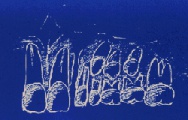
Depending on the course of the gap, the closure of the jaw gap may be necessary for the classification of the lateral incisor (Fig. 1) or for the classification of the canine tooth in the case of an existing (Fig. 2 and 3) or aplastic (not applied) lateral incisor. The closure of the cleft jaw is carried out by storing the body's own bone, which is taken from the pelvic crest during the operation. The prerequisite for this is the corresponding width of the upper jaw, since the segments of the upper jaw are fixed to each other by the storage of bone and a stretching of the upper jaw is then difficult to achieve and usually leads to the fact that the inserted bone disappears.
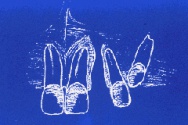
Fig. 2 | 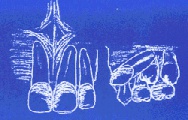
Fig. 3 |
Since patients with cleft lip, jaw and palate have a narrow upper jaw due to cleft, orthodontic pre-treatment in the sense of stretching the upper jaw is usually absolutely necessary for the operation. The elongation of the upper jaw is carried out depending on the extent of the discrepancy between the upper and lower jaw with a removable plate (Fig. 4) or a fixed palate suture extension apparatus (Fig. 5).
 Fig. 4 Fig. 4 |  Fig. 5 Fig. 5 |
| Oberkieferdehnplatte | Gaumennahterweiterungsapparatur |
Both devices have a screw, the activation of which stretches the upper jaw. In the case of a transverse discrepancy (width discrepancy) between the upper and lower jaw up to 4 mm, the upper jaw is stretched with the maxillary stretch plate (Fig. 4). The maxillary stretch plate is a removable brace that has a screw in the middle to widen the upper jaw.
The screw is activated every 5 days in the direction of the arrow by a quarter turn (= 0.24 mm) until the desired width of the upper jaw is reached. It should be worn day and night if possible and should only be taken out for eating, sports and cleaning. If the upper jaw is widened by more than 4 mm, this is carried out with the palate suture extension apparatus (Fig. 5). This is a fixed apparatus in which the expansion screw is activated 1 or 2 times a day (= 0.24 to 0.48 mm), depending on the instructions of the orthodontist.
With this apparatus, a strong stretching of the upper jaw can be achieved in a relatively short time. This should be done only under the strict control of the orthodontist ( every 7 - 10 days). Due to the rapid widening of the upper jaw, a tooth gap initially arises between the two middle incisors of the upper jaw (Fig. 6), which then closes partially or completely again in one of about 2 - 3 months (Fig. 7).
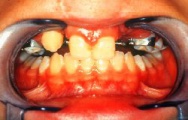
Fig. 7 | 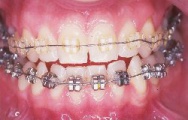
Fig. 8 |
After healing of the bone stored in the cleft of the jaw (6 - 8 weeks), orthodontic further treatment is usually carried out with a multiband apparatus (fixed braces) to shape the tooth (Fig. 8).
